The Food
There’s one big problem with food in China: more often than not, when you try to photograph it, it’s already escaped you.
Don’t worry–I’m not talking about the type of food that can run away from you on its own accord! (They do sell that kind of thing, but you won’t see any of it on this blog.) No, I’m instead referring to the unique and wonderful way that food is served to large groups in restaurants.
Rather than everybody getting their own dish of food, you are instead given a small empty plate and bowl with chopsticks and a spoon. All the food that everybody ordered is then presented in serving dishes on a lazy susan the middle of the table, and its up to you to grab what you want to eat before the dish is spun away from under your nose!
Needless to say, you learn to use chopsticks quickly when your nourishment depends on it.
That being said, I’ve tried my best to compile a few images of the types of food I’ve consumed here in Hangzhou. The list is by no means comprehensive–and it will likely grow exponentially before I leave–but hopefully I will leave you with some idea of the wild and wonderful world that is authentic Chinese cuisine!
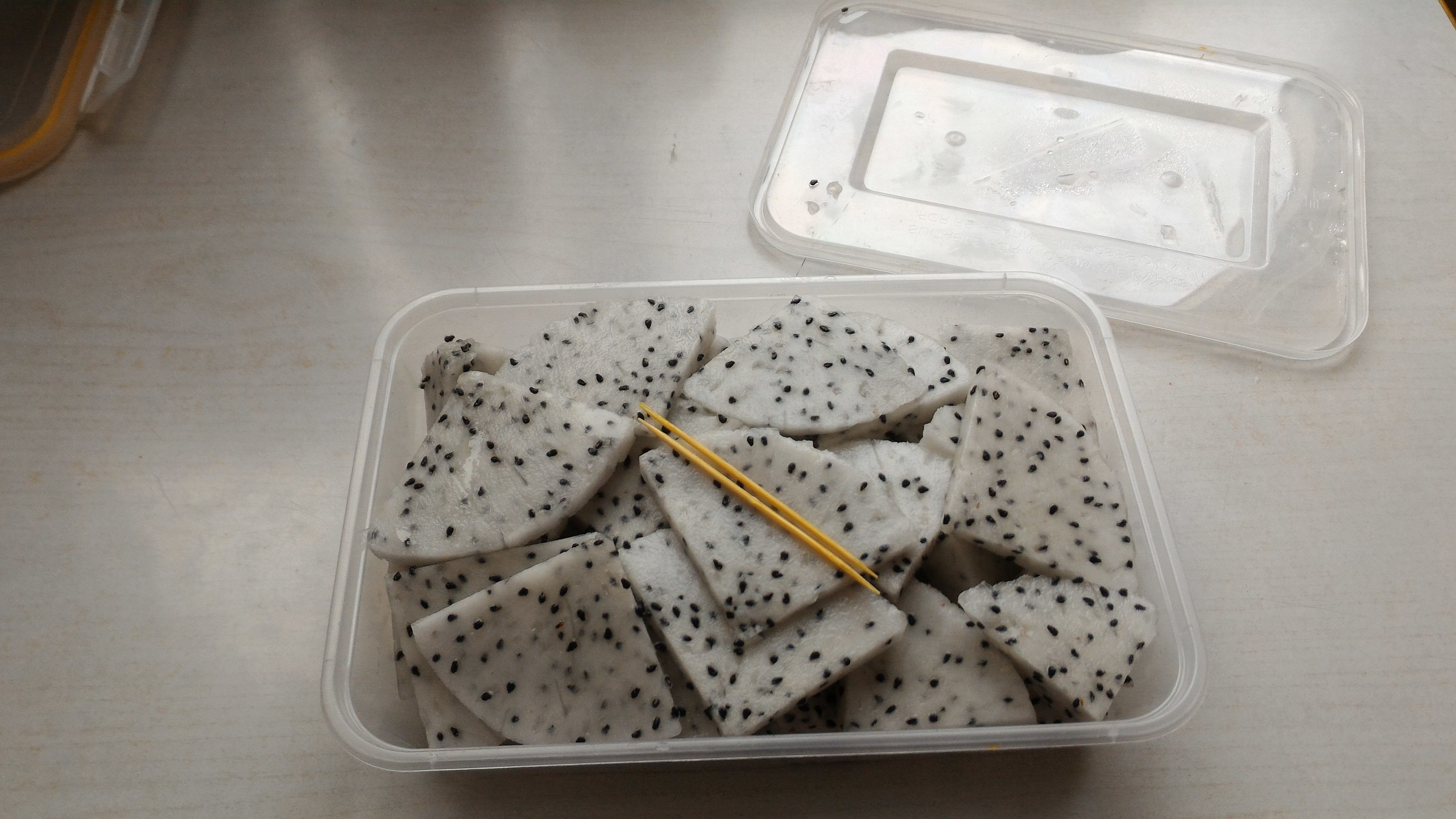
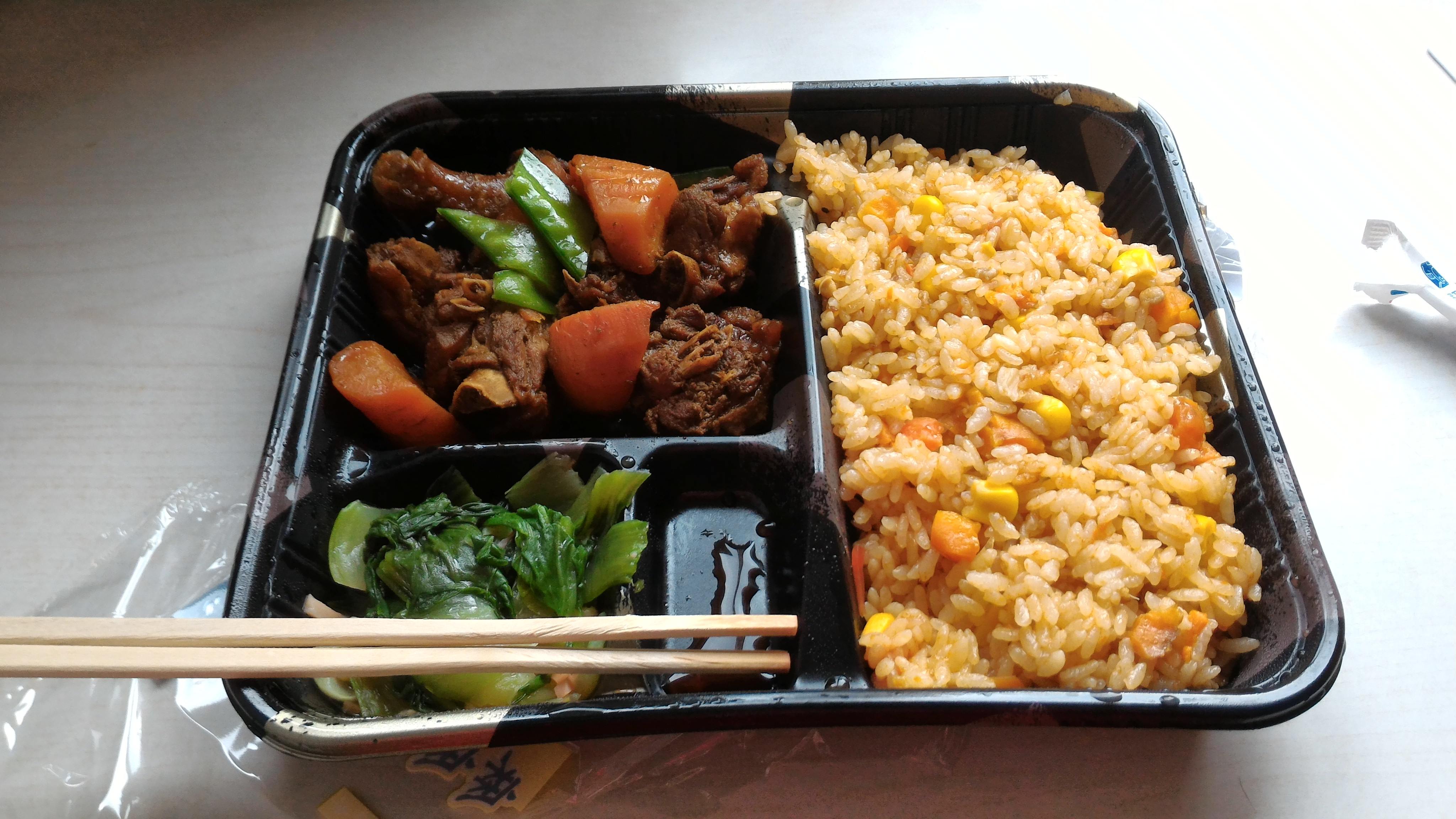
We’ll start with the tame stuff. Right across the street from the dormitory is a nice little collection of convenience stores and food shops, selling everything from fruit to loaves of bread and dumplings. Usually my lunch consists of something similar to the above: a chopped-and-peeled dish of some mystery produce (dragonfruit, in this case–delicious, like a mild kiwi!), and a microwavable meal.
Now, before you get on my case about eating frozen food like a typical American tourist, hear me out! These things are nothing like the cheap Hot Pockets sold in the United States. They often have balanced amounts of vegetables and grains, with a variety of meat or vegetarian options that are easily recognizable. Furthermore, when you buy it at the c-store, they heat it up for you and provide chopsticks and a toothpick at no extra charge!
Also, not to brag or anything, but the entire lunch pictured above costs around $3.00 (yes, that’s US dollars). Talk about living on a budget.
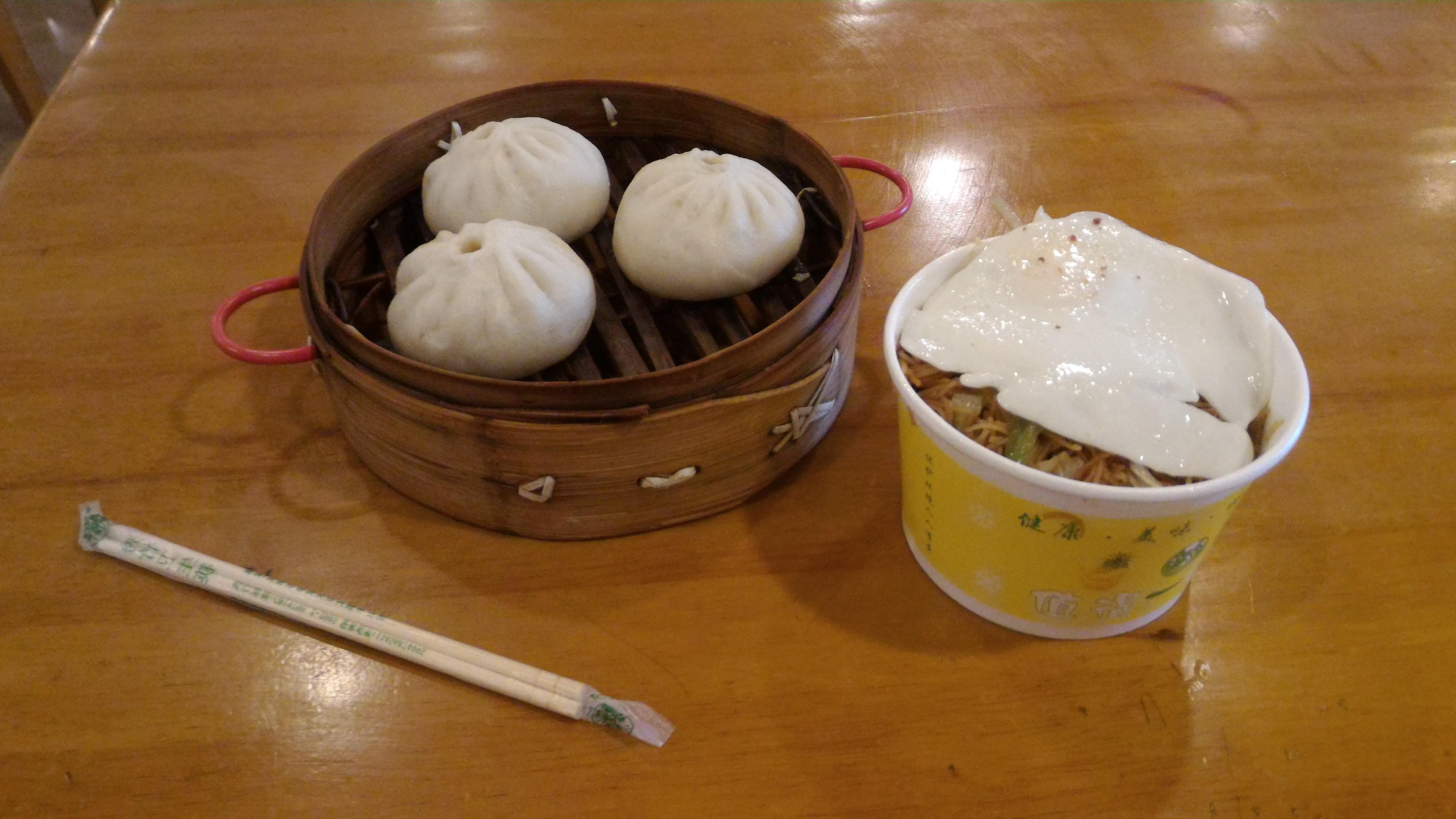
Speaking of living on a budget, the cafeteria breakfasts literally only cost dimes here. If you’re super hungry in the mornings (like me) and need to order noodles, an egg, three sticky buns, and a warm glass of soy milk, it will put you out around a dollar fifty.
Trust me, if Chinese people are considered relatively slim, it has nothing to do with the price of the food here!
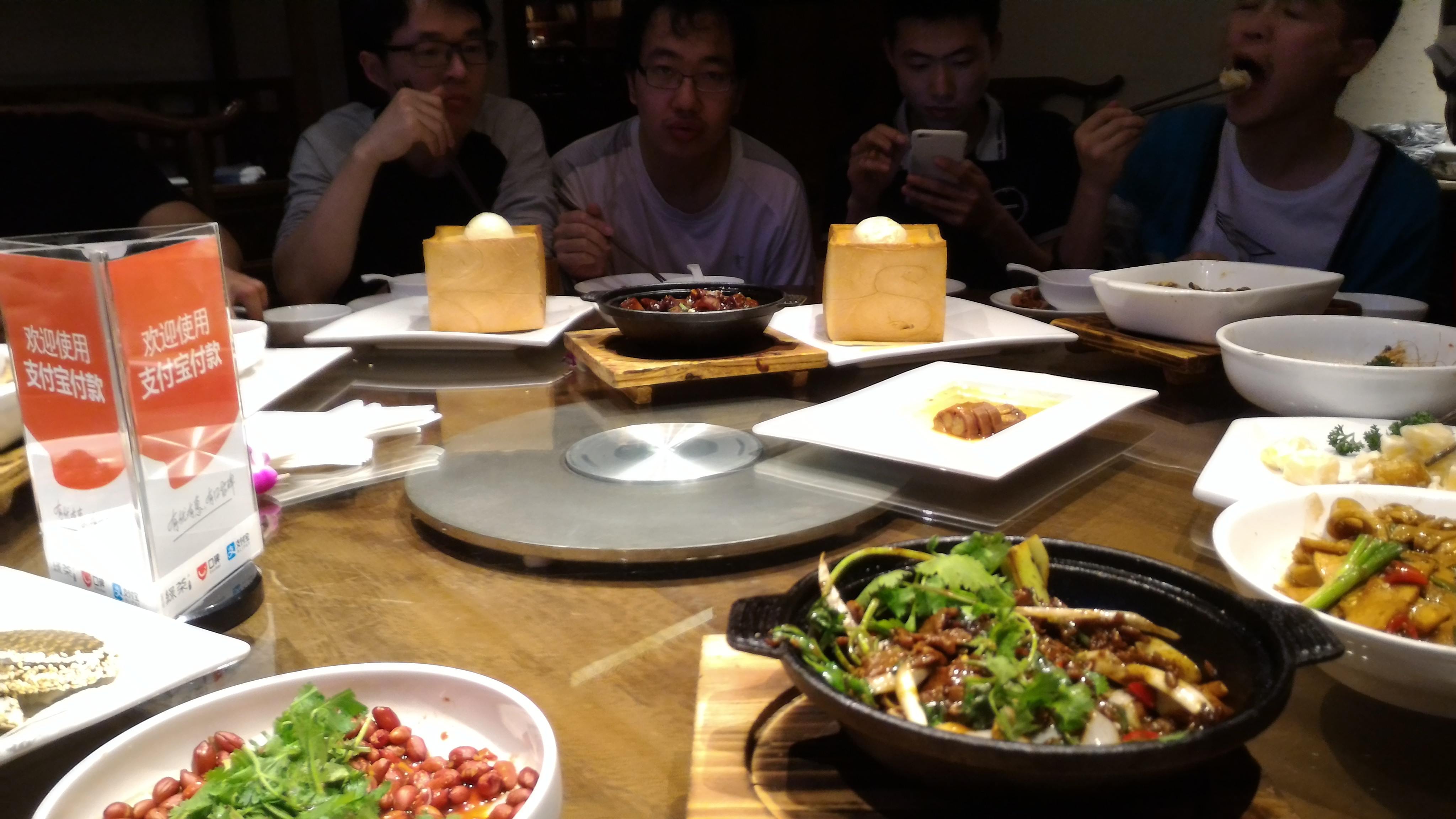
Starting with this image one can see a sampling of the food collection served at a typical large lazy-susan dinner. The blessing and the curse of this service style is that you almost never see the same dish twice. All too often I eat something absolutely heavenly, but by the time I look up the dish is gone and I never see it again in the future. sigh!
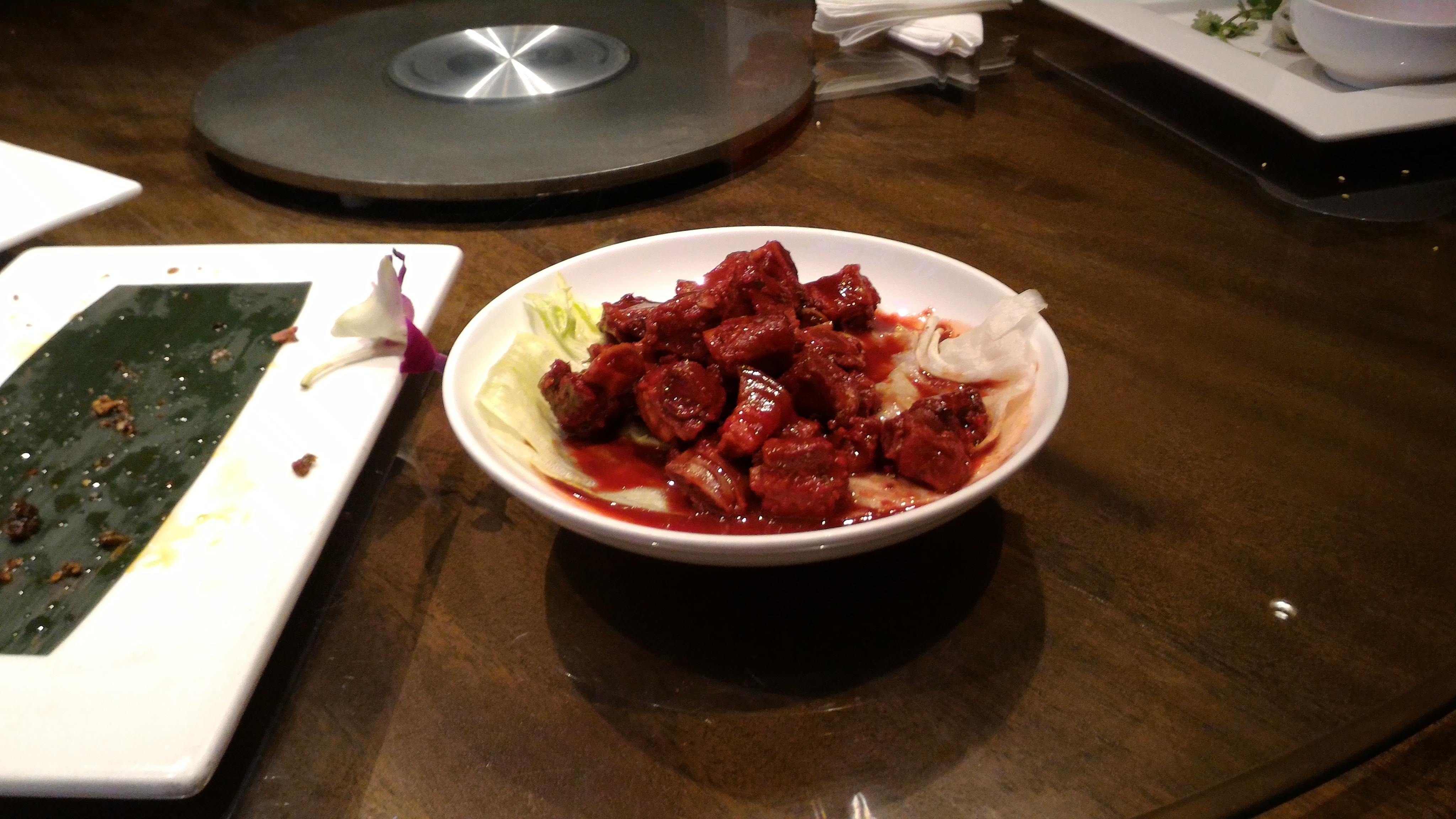
To add to the stress of the Chinese food wheel of fortune, often dishes such as this pork is served over a garnish of fresh leafy greens. Pretty indeed, but “fresh leafy greens” is synonymous for “unwashed bacteria farm” in China, so nothing touching the garnish is safe to eat. You’d better level that mountain like a borderline-bankrupt coal miner if you want any meat, because once you get to the base no one is touching those pieces at the bottom.
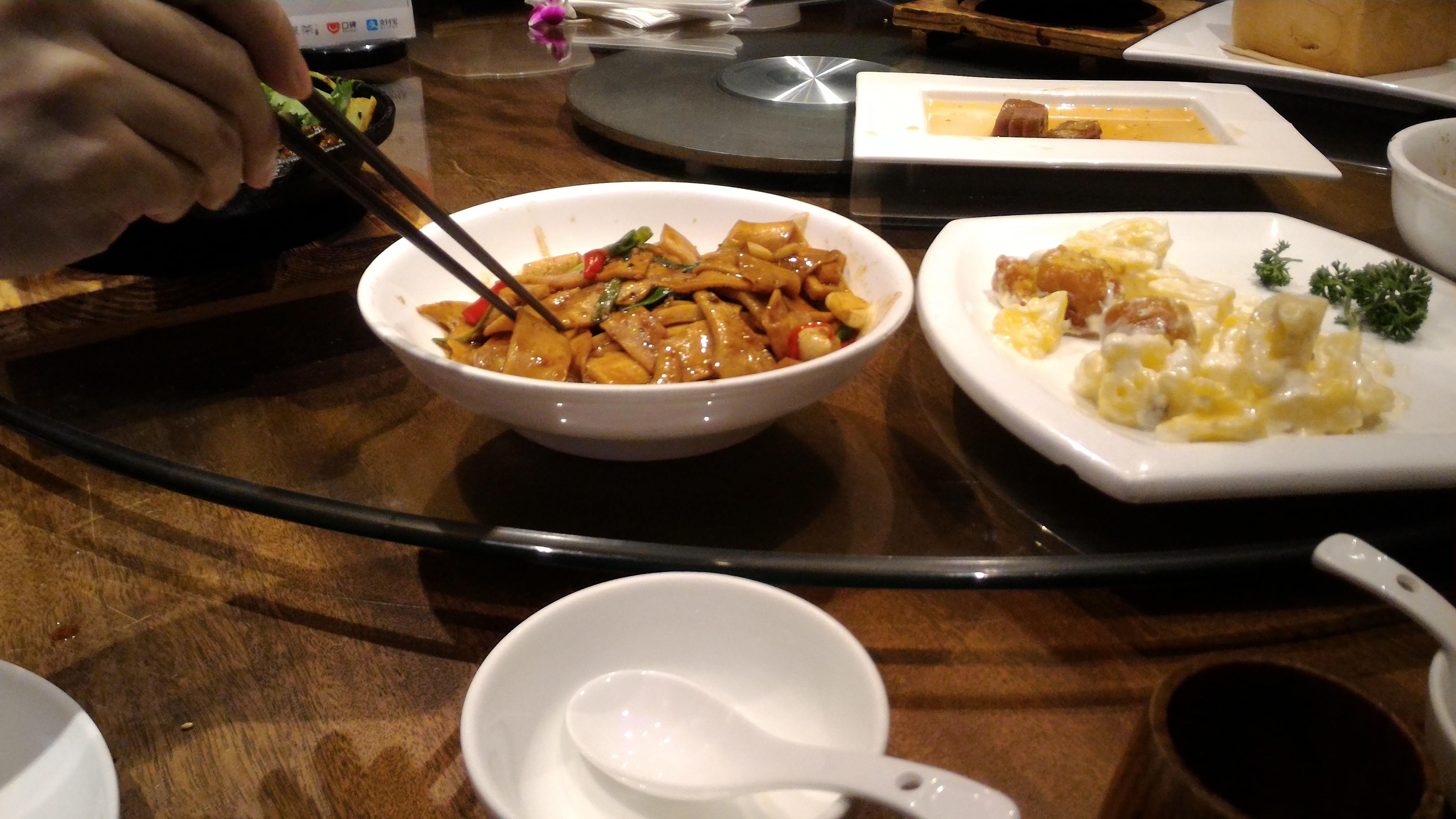
Tofu. Escaping the iron grip of chopstick masters since 2000BC.
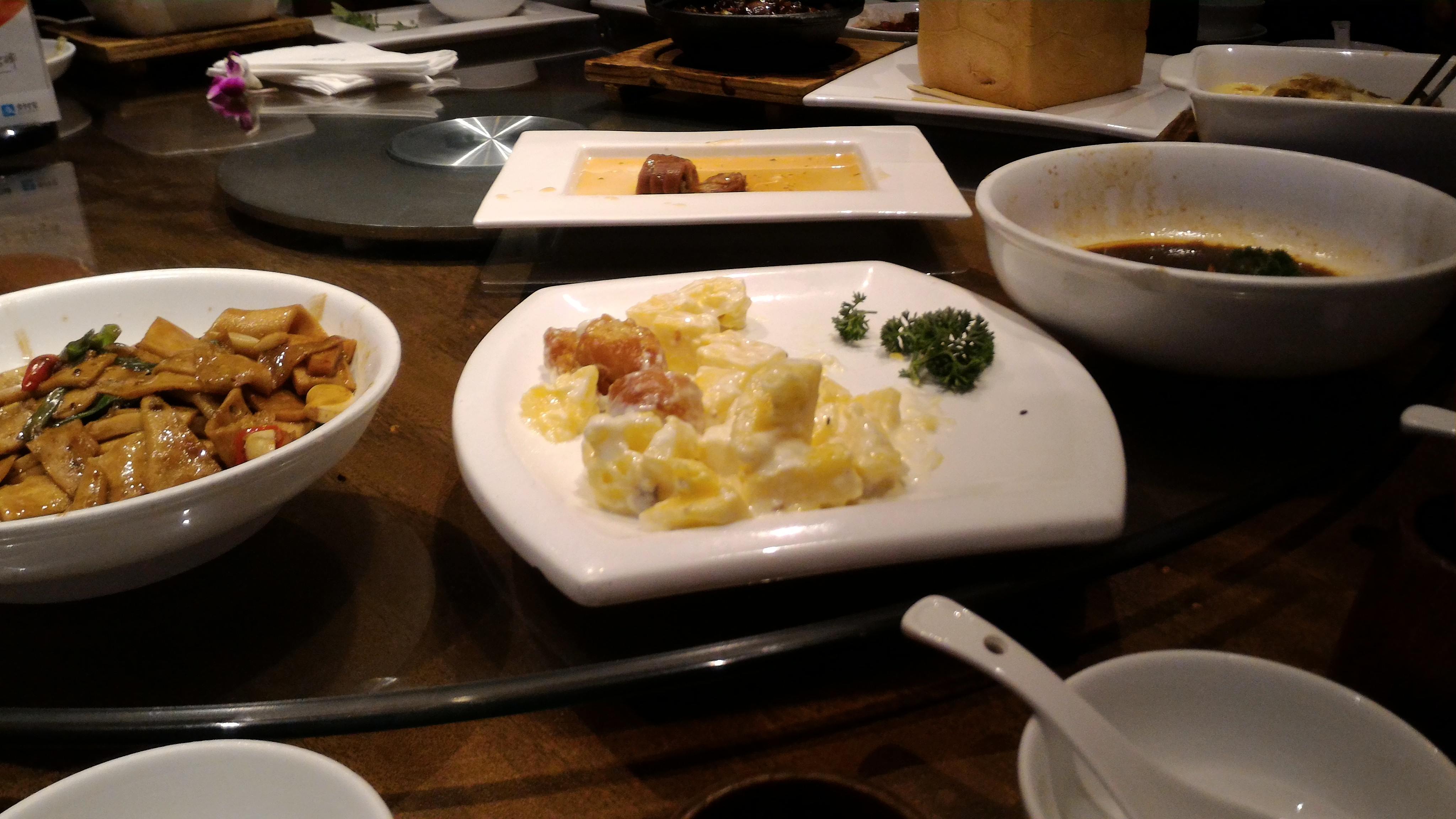
Pineapple chicken! One quickly learns that China doesn’t get its share of fruits and veggies as separate dishes: you’ve got to sleuth them out of the meals labeled as “Three-Bird Plus Beef Wrapped in Tofu Supreme.” Fortunately, with dishes such as this one, it isn’t hard to find the fruit!
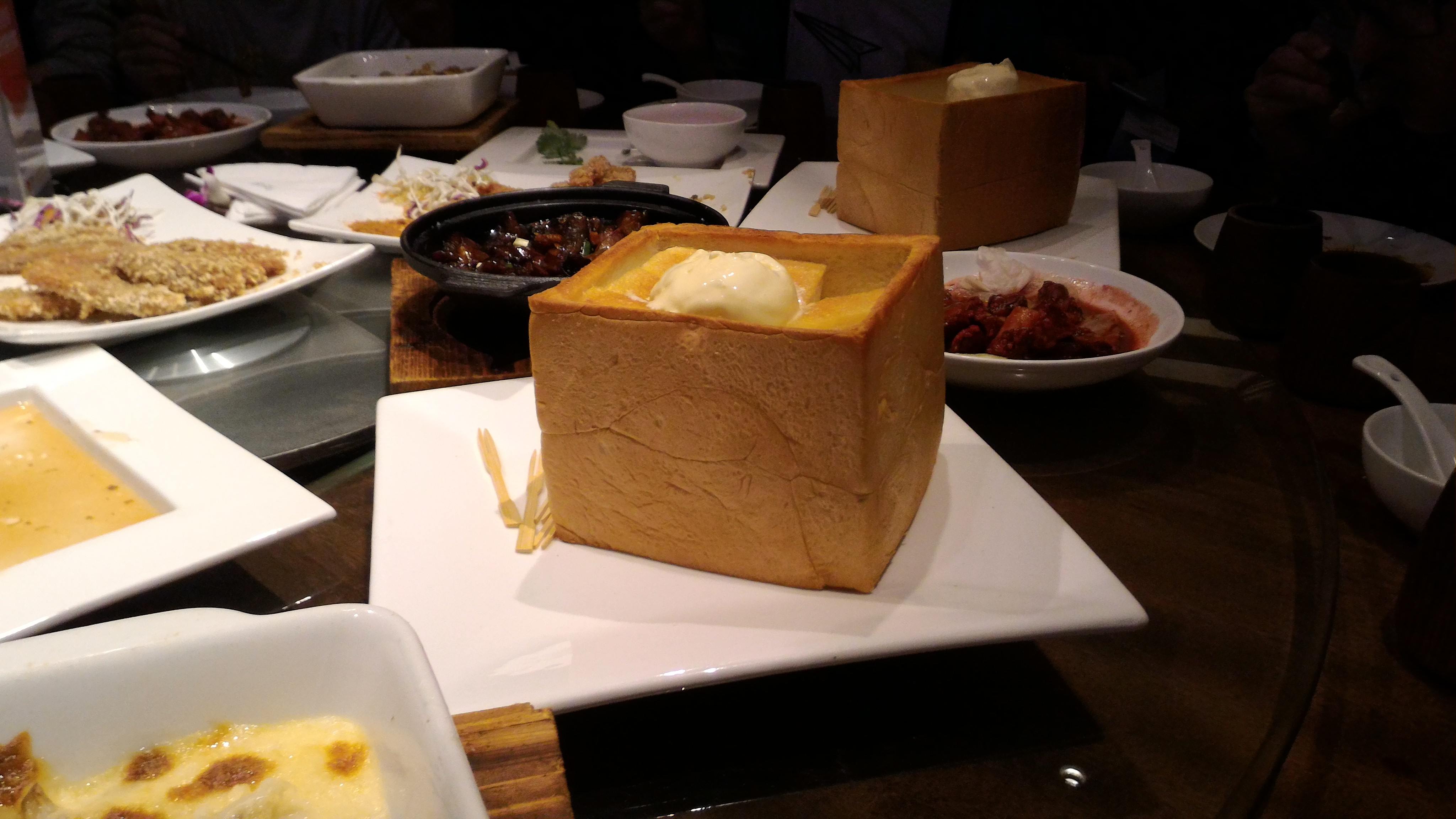
So basically, this is a loaf of hot bread chopped into cubes on the inside, with a scoop of ice cream dumped on top. You use your chopsticks to dig a cube out of the melting sugar magma seeping into the carbohydrate volcano, dip it into the cream on top for extra calories, consume your piece of the destruction, and repeat.
I have no idea why this isn’t a thing in the United States!
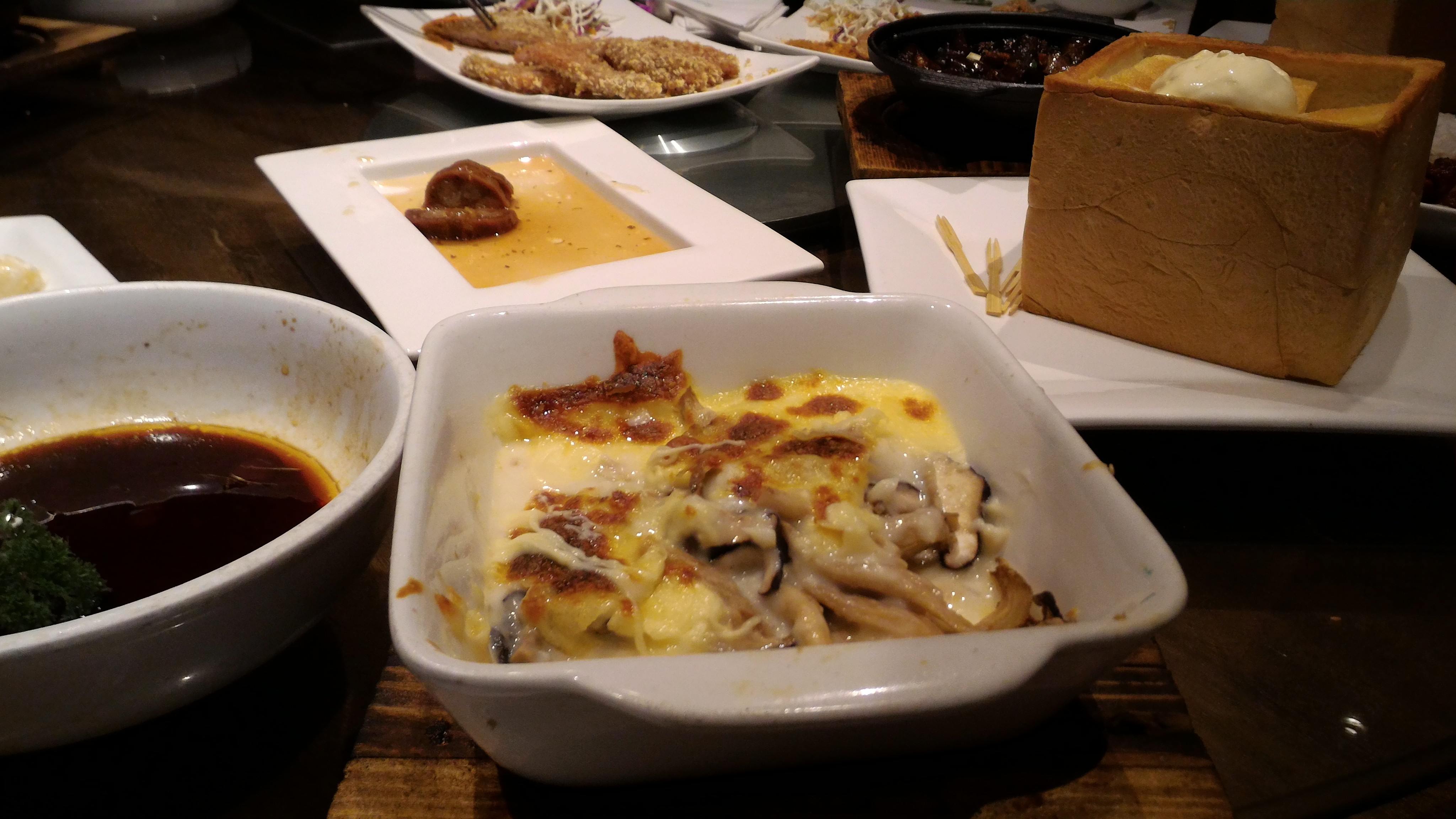
Here we have a mushroom casserole. There are so many mushrooms in China, I’m astonished that there hasn’t been an influx of Italian plumbers… But actually, I photographed this dish to talk about the cheese. As it turns out, cheese is virtually unknown in China–even in the pizza shops–and instead they use various forms of dairy-free cheese substitute. Surprisingly, despite their bad reputation in the US, dairy-free cheeses in Chinese dishes actually complement the local tastes quite well! I would even venture to consider the culinary experience as something altogether unique from cheese, and pretty good too.
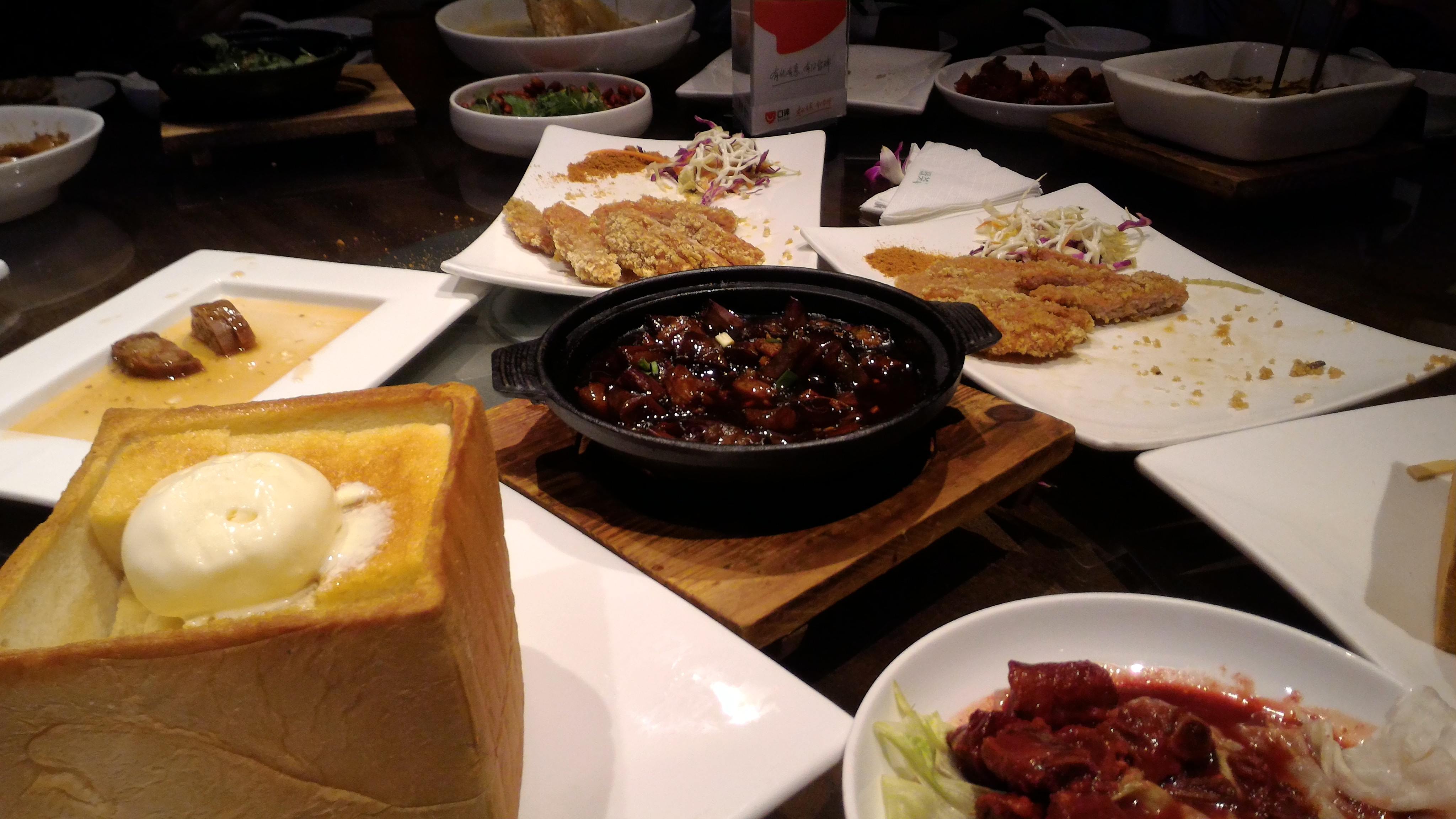
Eggplant is served here the way it should be everywhere: in a boiling hot sauce of Sichuan peppers. Unfortunately I don’t have an image of the “dancing” eggplant variety, where bonito flakes are added and propelled into the air by the radiation, but I’ll leave finding pictures of that dish as an exercise to the reader.
Also featured in the above image are fish-sticks–Americans love them some fish sticks.
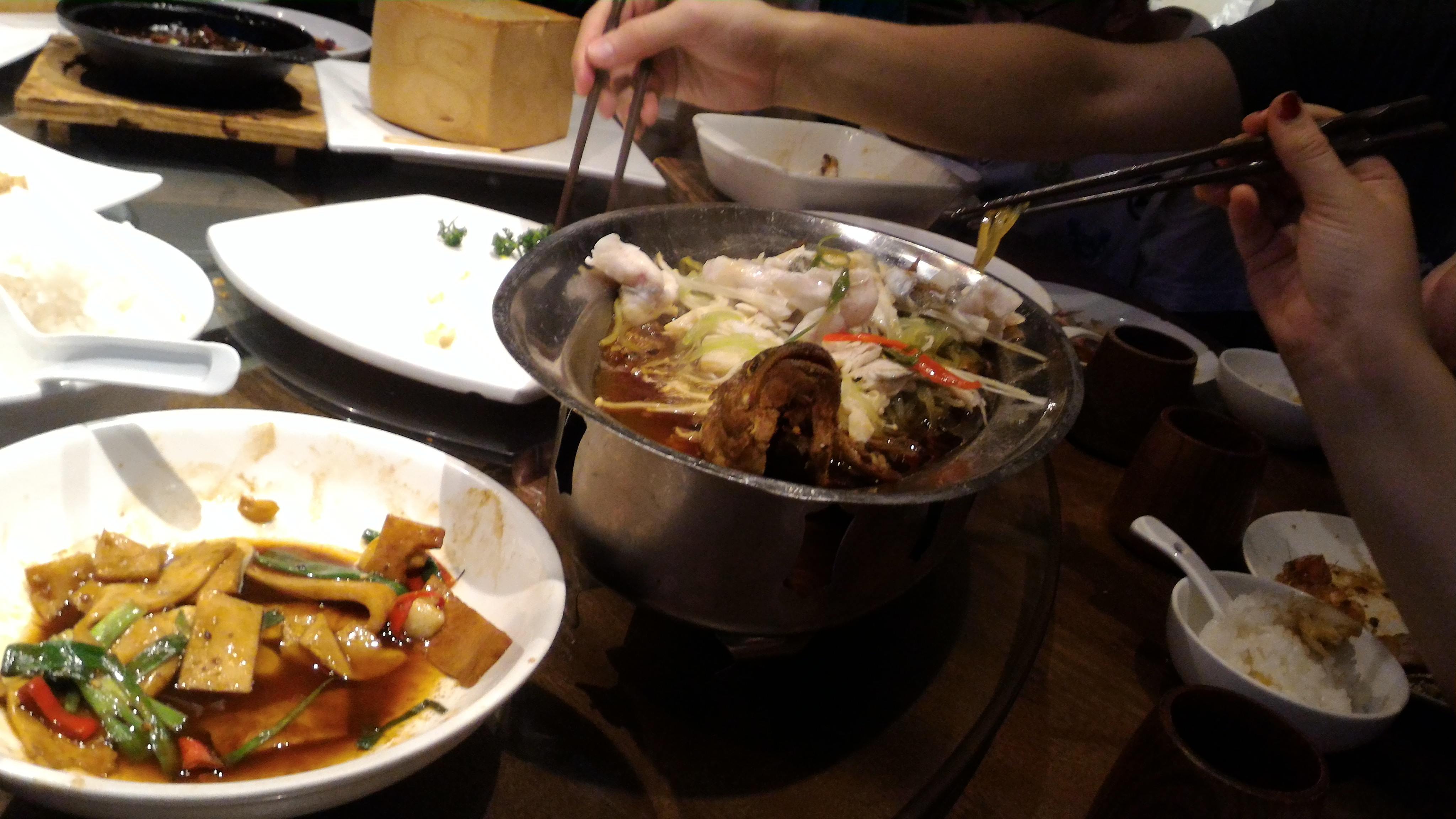
Here comes the fish;
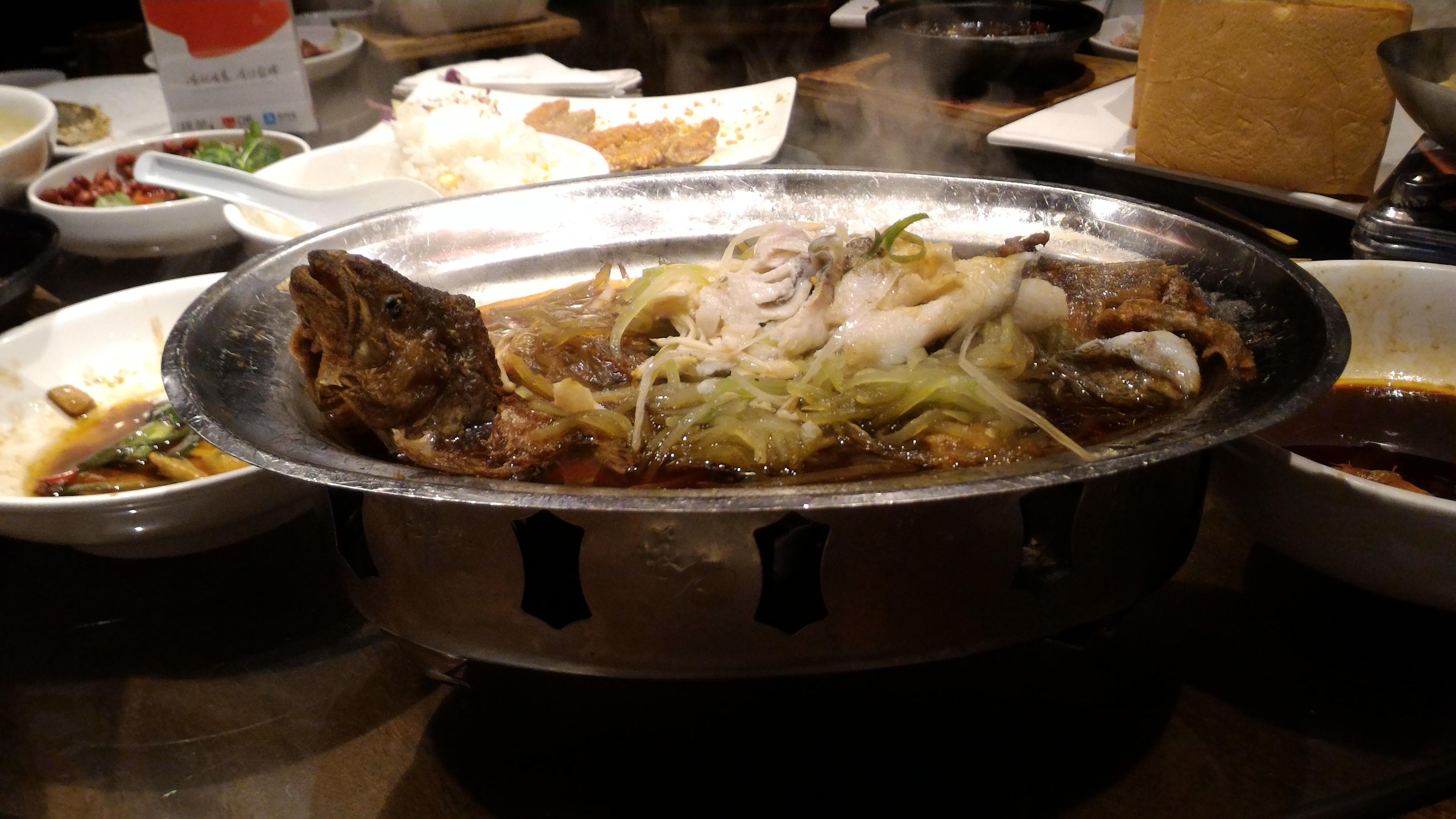
Drowned in his dish!
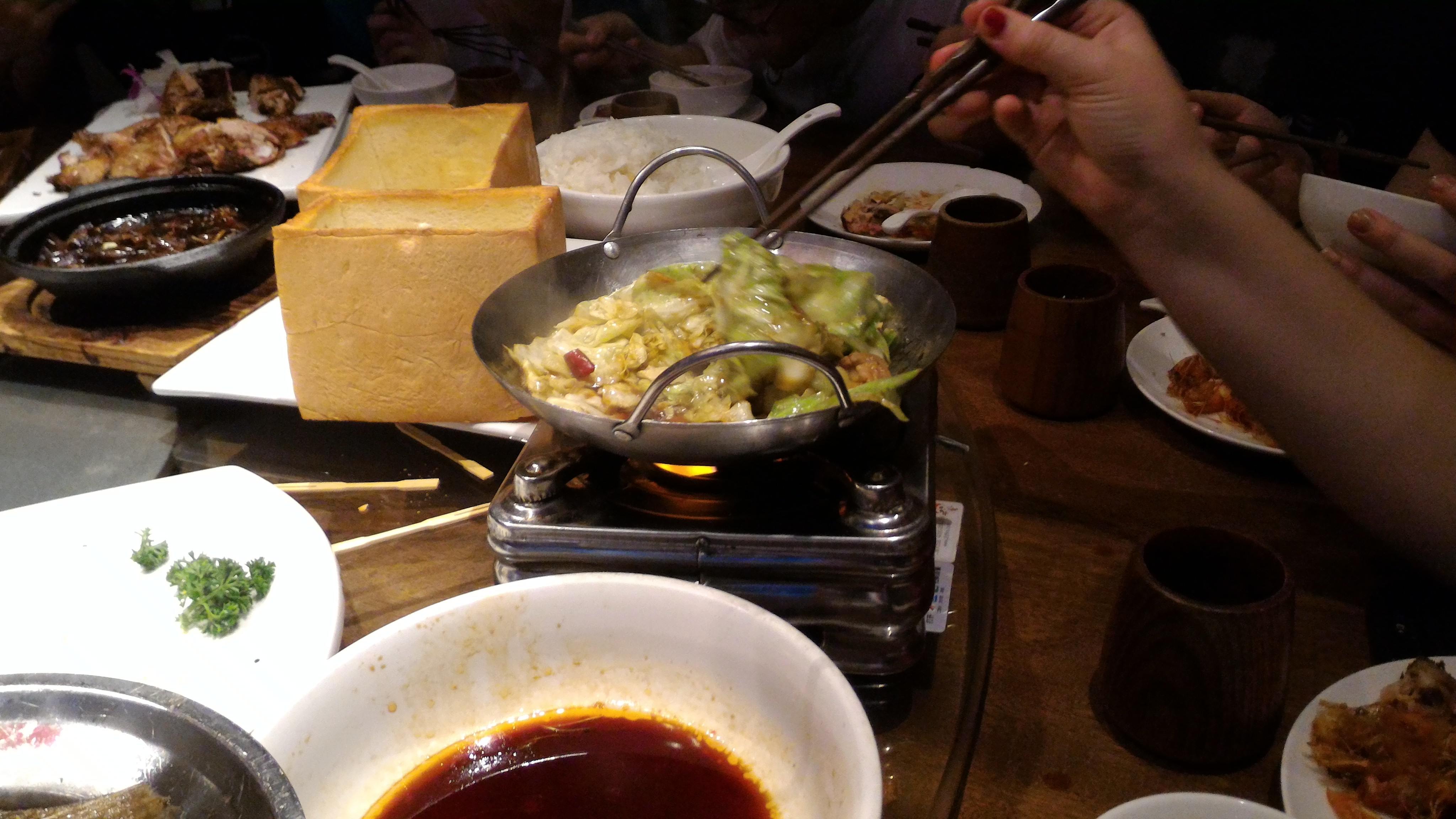
Don’t worry, there are a few dishes that contain your average, boiled-to-death cabbage to add some semblance of leafy greens to your diet. Other greens not pictured here are bamboo shoots and boiled okra: the seeds work wonders for sweeping out one’s digestive system!
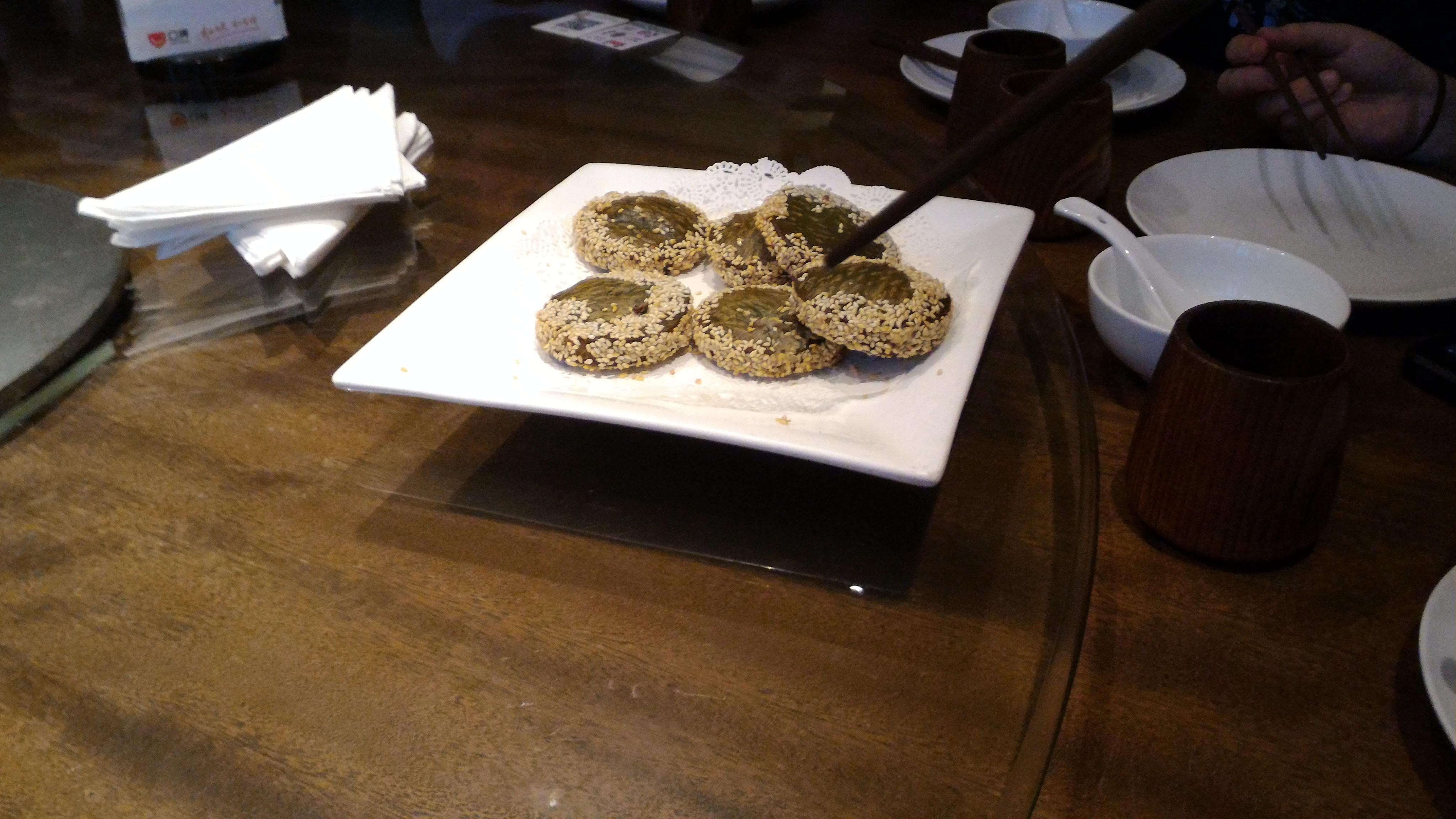
Finally, one of the dishes that I can always look forward to at any self-respecting Chinese restaurant is the tea cake. These little patties are covered in sesame seeds and filled with green-tea flavored sweet bean paste, and in my opinion are a thousand times more delicious than any ice cream volcano loaf. Close runner-ups are pumpkin fries and sweet mung bean paste (you can tell I’ve been doing a great job at remembering my Chinese food names). The latter is a miracle-worker when you’ve put your money where your mouth is with some fancy-looking Sichuan firecracker and now the mouth in question is purple and numb with pain.
Only two more food pictures remain, and a quick word of caution along with it: Japanese food in China is just as expensive as Japanese food in America. Furthermore, it consists almost exclusively of raw fish and fresh leafy vegetables. This particular Japanese place I went to, upon sitting our group down, explained to us that they had just opened and that every dish was 25% off because they were still “testing out” the recipes with customers. Oh boy. I just lost all confidence in this institution. While the rest of the group proceeded to order several plates of sushi and a boatload of mystery meat:
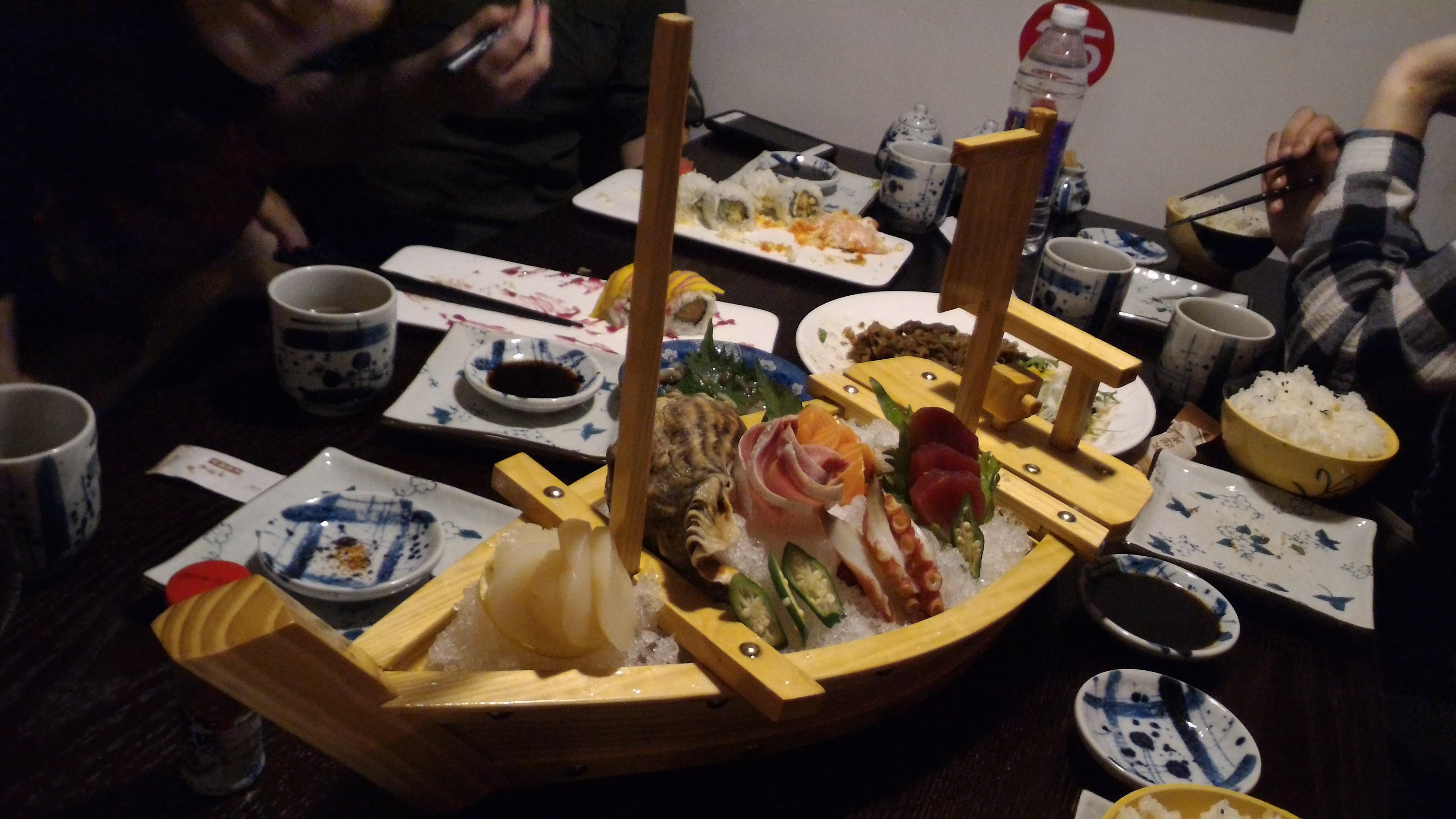
…my wise-stomached friend and I turned instead to the kids menu and found the only cooked dishes in the entire restaurant: fried rice and ramen noodles.
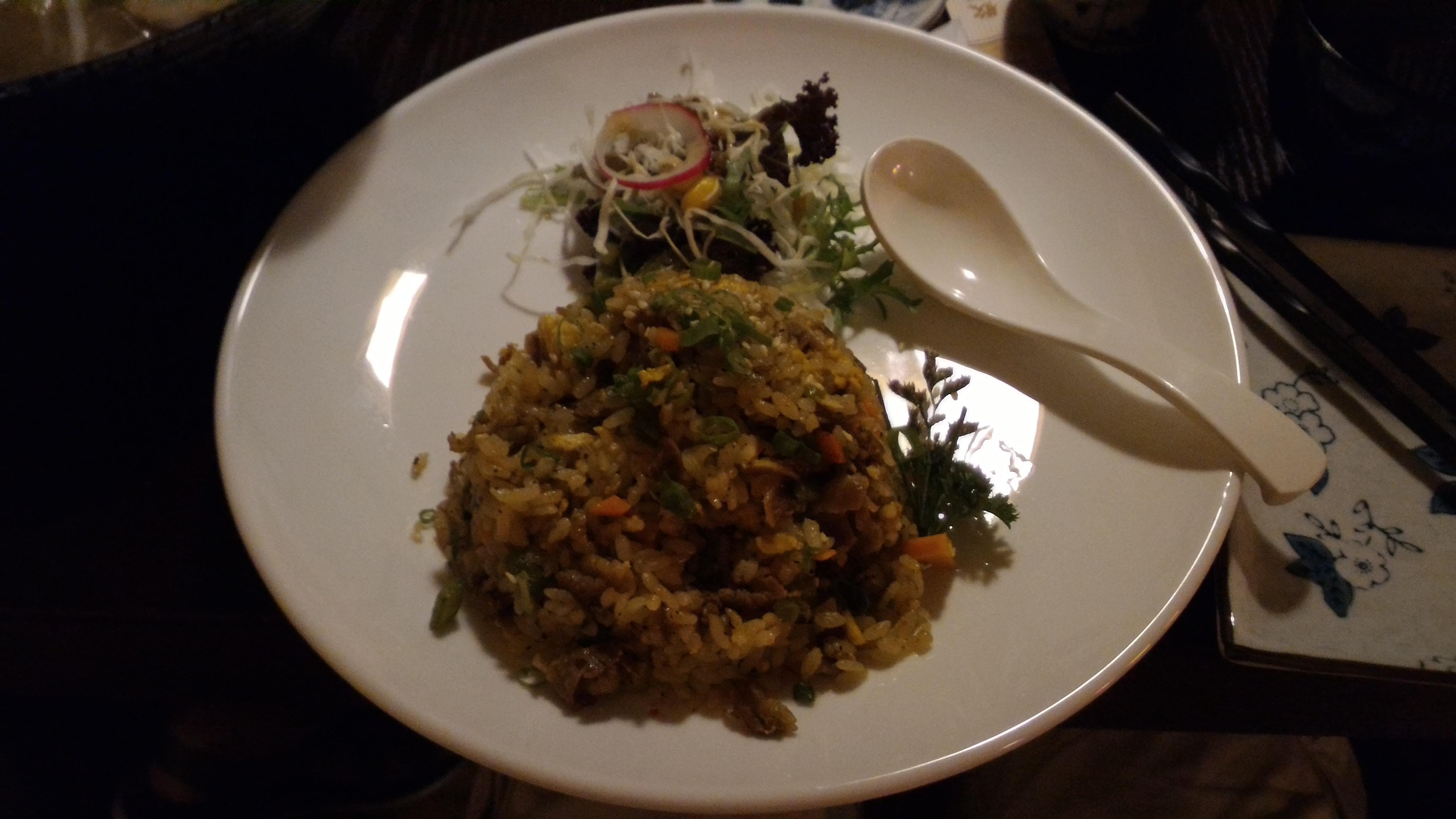
Hooray for defensive eating!
